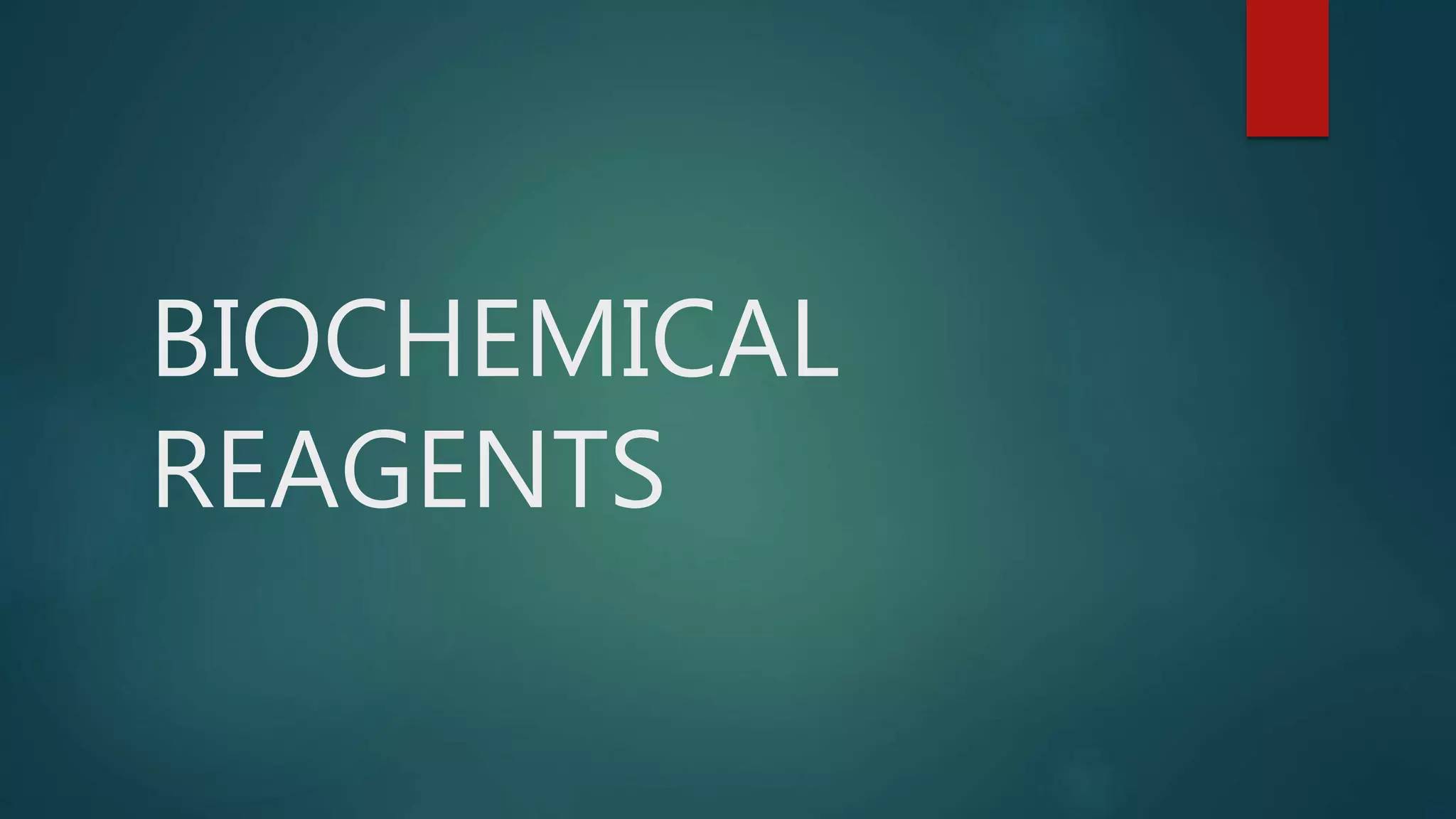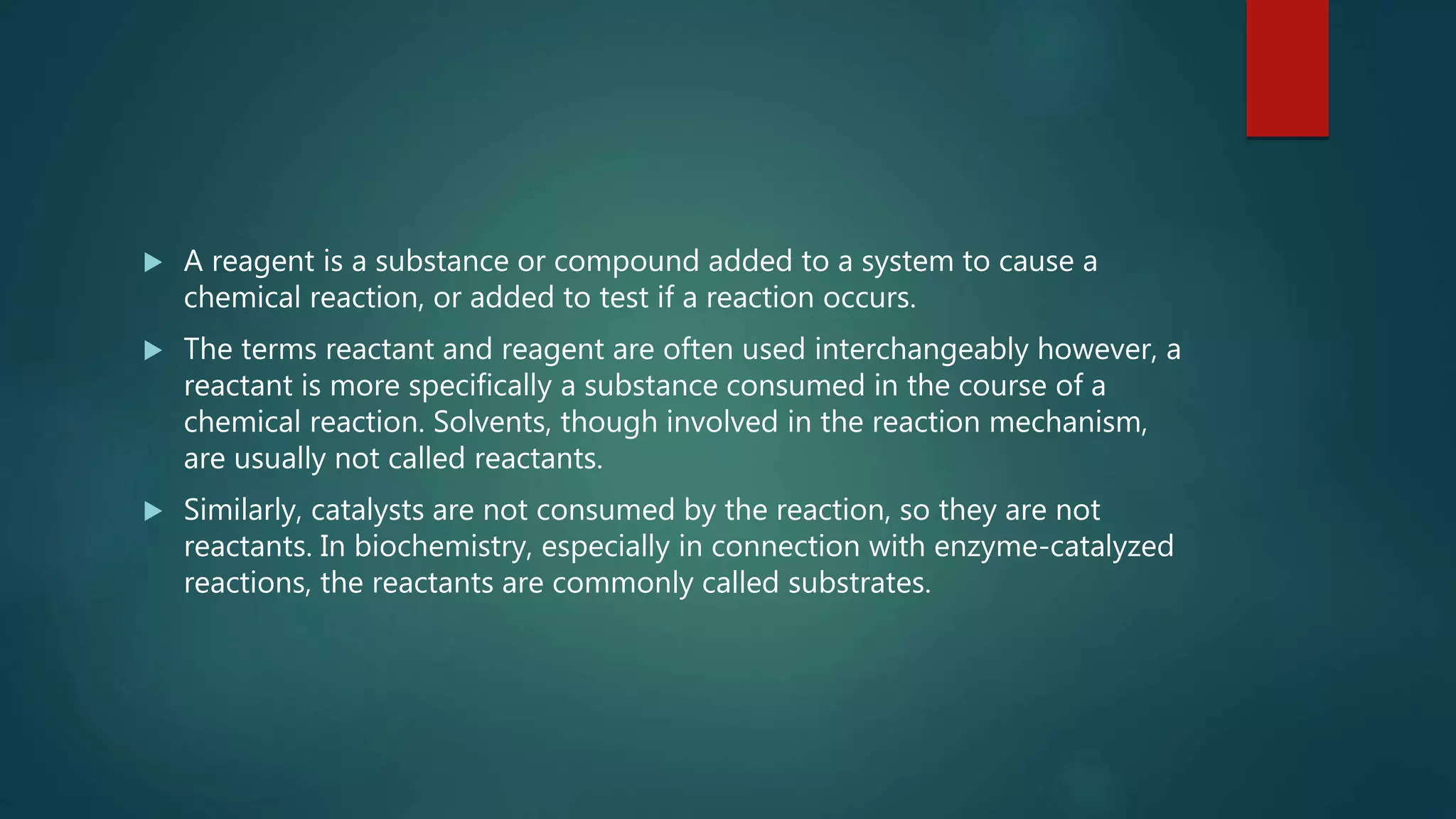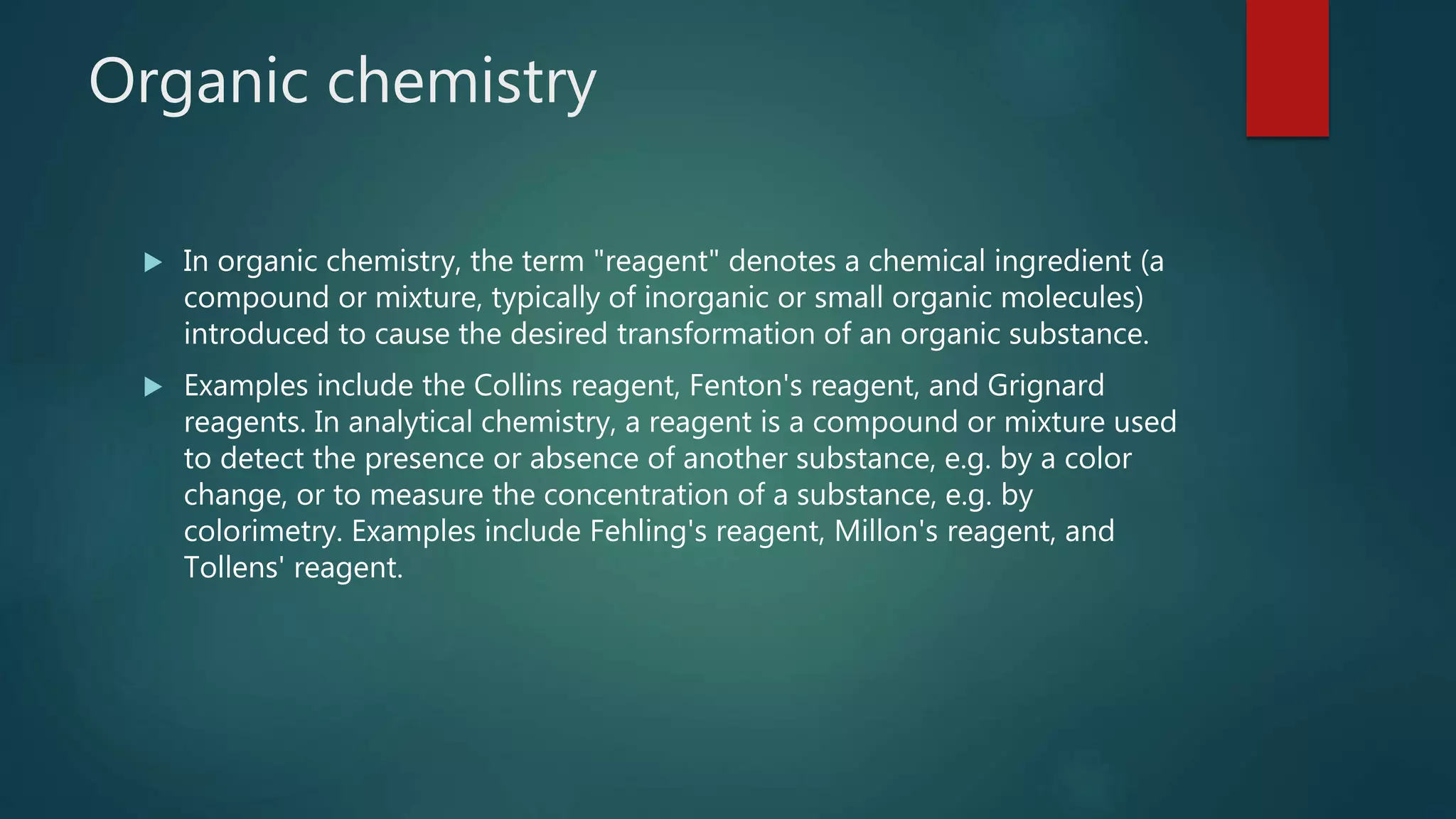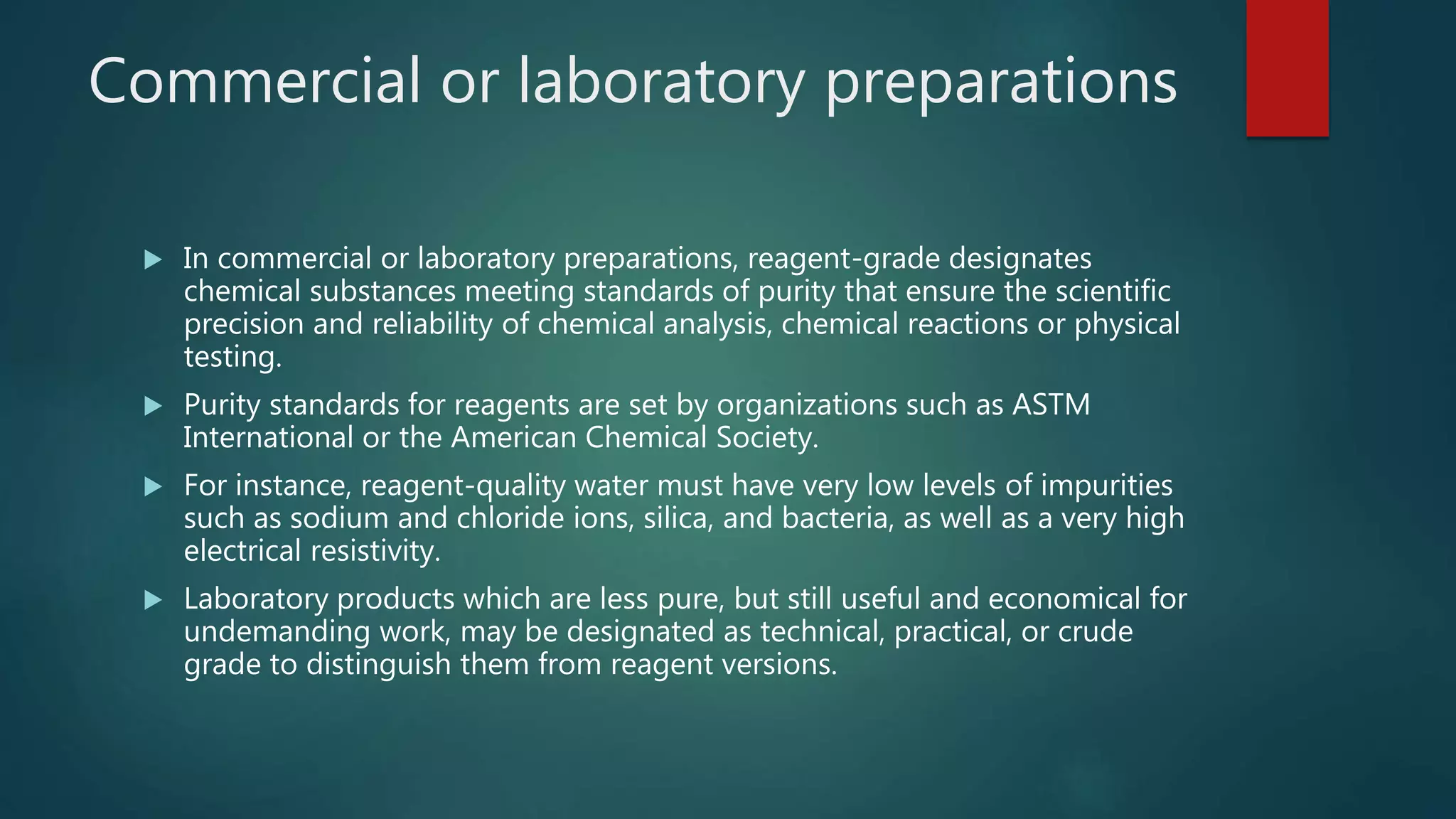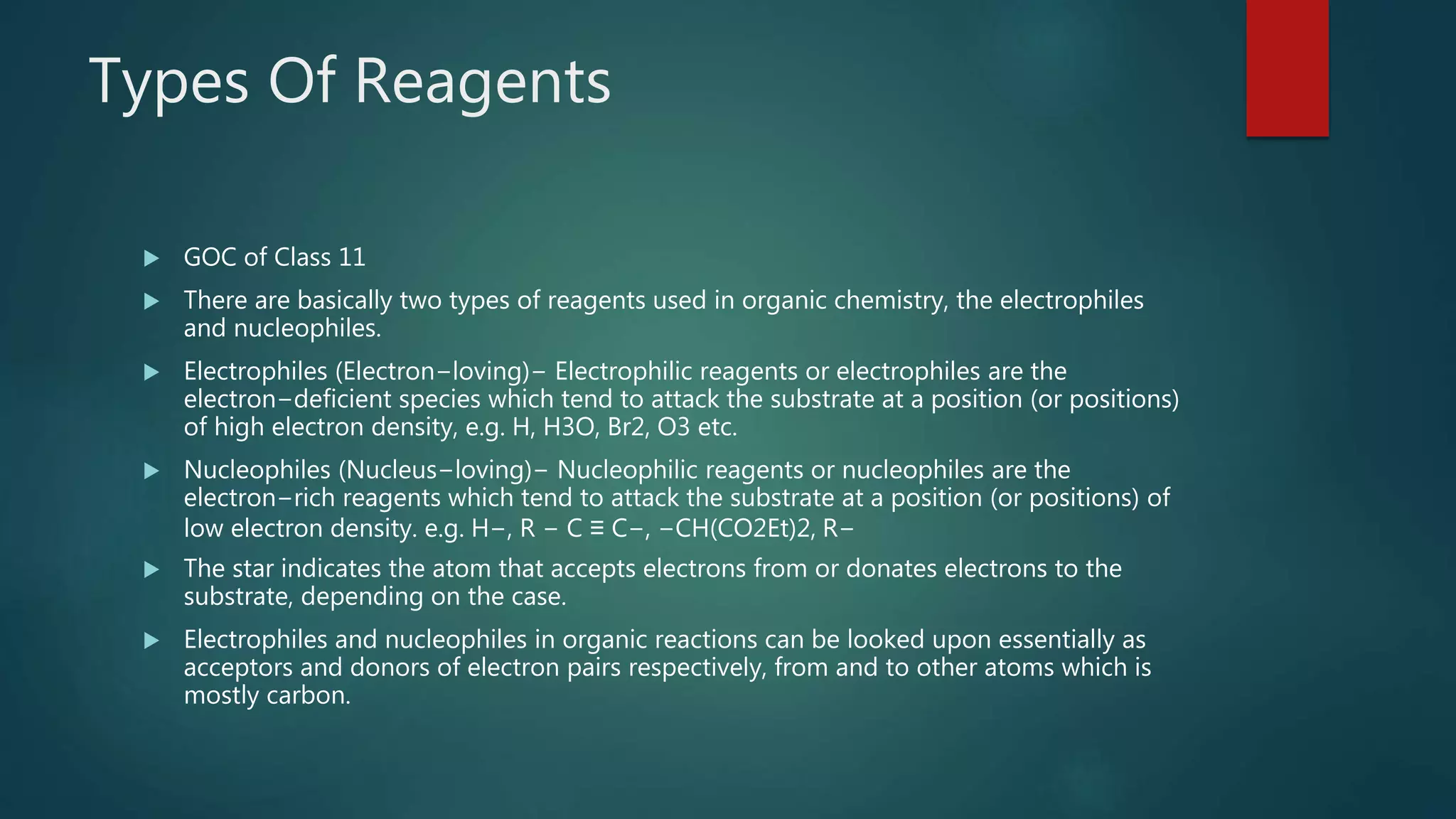A reagent is a substance added to cause or test for a chemical reaction. Reactants are consumed in reactions while catalysts are not. In biochemistry, substrates are reactants in enzyme-catalyzed reactions. In organic chemistry, reagents cause desired transformations of organic substances like Collins, Fenton's, and Grignard reagents. Analytical reagents detect or measure other substances through color changes. Reagents used commercially or in labs must meet purity standards to ensure precision. Biology reagents in the 1980s enabled identifying and manipulating cells, including antibodies, oligomers, and cloning tools. Reagents include electrophiles that attract electrons and nucleophiles that donate electrons in organic reactions.
